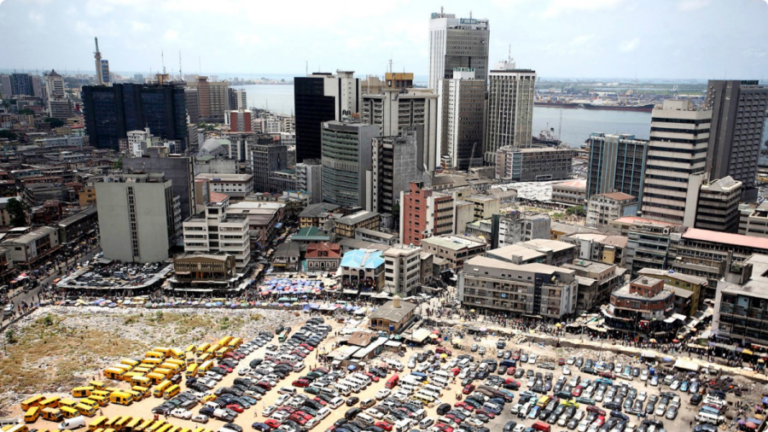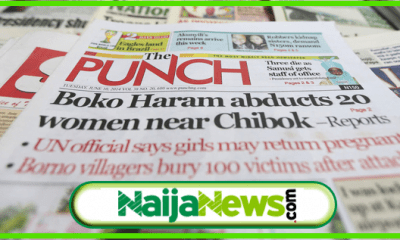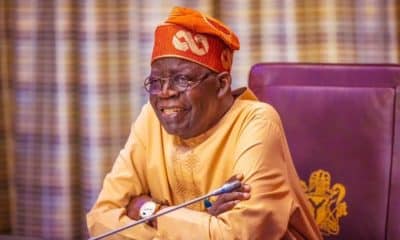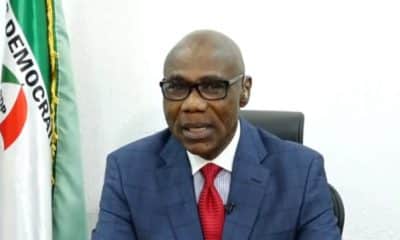Business
Buhari Grows Nigeria’s Economy To Strongest Point Since Jonathan Era

The Nigerian economy, currently being managed by the administration of President Muhammadu Buhari grew by 5.01 per cent, year-on-year, in the second quarter of 2021, the strongest growth since the fourth quarter of 2014 when President Jonathan was in charge.
Naija News reports that this is according to the second-quarter GDP report released by the National Bureau of Statistics (NBS) on Wednesday.
The development also marks three consecutive quarters of growth following the negative growth rates recorded in the second and third quarters of 2020. The Q2 2021 growth rate was higher than the -6.10 per cent growth rate recorded in Q2 2020 and the 0.51 per cent recorded in Q1 2021 year on year.
This growth is also an indication of the return of business and economic activity near levels seen prior to the nationwide implementation of COVID-19 related restrictions.
This newspaper reports that the Buhari administration is currently pursuing an Economic Sustainability Plan (ESP) which is focused on cushioning the effects of the COVID-19 pandemic on non-oil export businesses, thereby safeguarding jobs and creating new ones.
Earlier in March this year, the Minister of Industry, Trade and Investment (MITI), Otunba Niyi Adebayo, officially flagged off the N50 billion Export Expansion Facility Programme (EEFP) and also launched the first online Grant Management Portal (GMP) for non-oil exports.
This programme is expected to significantly raise the volume of non-oil exports in Nigeria, and it’s a spin-off of the Zero Oil Plan approved by the President. The development and implementation of the EEFP are now being superintended over by the Vice President, Prof. Yemi Osinbajo.
The foregoing are among the various ways the economy is presently being managed. The NBS has over time proven itself as credible in the delivery of reliable data about the state of the economy.
Meanwhile, the NBS report reads, “Nigeria’s Gross Domestic Product (GDP) grew by 5.01%(year-on-year) in real terms in the second quarter of 2021, marking three consecutive quarters of growth following the negative growth rates recorded in the second and third quarters of 2020.
“The Q2 2021 growth rate was higher than the -6.10% growth rate recorded in Q2 2020 and the 0.51% recorded in Q1 2021 year on year, indicating the return of business and economic activity near levels seen prior to the nationwide implementation of COVID-19 related restrictions.
“The steady recovery observed since the end of 2020, with the gradual return of commercial activity as well as local and international travel, accounted for the significant increase in growth performance relative to the second quarter of 2020 when nationwide restrictions took effect.”
Year to date, real GDP grew 2.70% in 2021 compared to -2.18% for the first half of 2020. Nevertheless, quarter on quarter, real GDP grew at -0.79% in Q2 2021 compared to Q1 2021, reflecting slightly slower economic activity than the preceding quarter due largely to seasonality.
In the second quarter of 2021, average daily oil production stood at 1.61 million barrels per day (mbpd), which is -0.19mbpd lower than the average daily production of 1.81mbpd recorded in the same quarter of 2020 and -0.10mbpd lower than the 1.72mbpd recorded in the first quarter of 2021.
Real growth of the oil sector was –12.65% (year-on-year) in Q2 2021 indicating a decrease of –6.02% points relative to the growth rate recorded in the corresponding quarter of 2020.
The report added; “Performance in the non-oil sector grew by 6.74% in real terms during the reference quarter (Q2 2021). The Q2 2021 growth rate was higher by 12.80% points compared to the rate recorded in the same quarter of 2020 and 5.95% points higher than the first quarter of 2021.
“During the quarter, the non-oil sector was driven mainly by growth in trade, information and communication (Telecommunication), transportation (Road Transport), electricity, agriculture (Crop Production) and manufacturing (Food, Beverage & Tobacco), reflecting the easing of movement, business and economic activity across the country relative to the same period a year earlier.”












